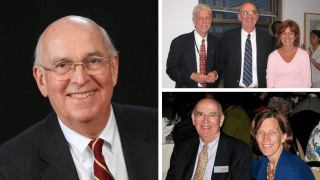Turns out it is rocket science.
In fact, the emerging evidence around how students learn is so dynamic that thoughtful educators must continually recalibrate their teaching and hone their practice just to keep up with the latest scientific learning research.
That’s the thesis of Deans for Impact, who presented their theories about research on the science of learning at the National Press Club earlier this month.
What they suggest about teaching strategies that are supported by learning research — and those that may not be — will fascinate educators and give us issues ripe for discussion over the next few years.
From the get-go, University of Virginia cognitive psychologist Dan Willingham stated — despite widespread belief in the idea — there is little evidence that students have different learning styles. He contends that the theory that some of us are visual learners while others are auditory or kinesthetic is a commonly held myth.
A strategy Willingham favors is called probing memory. Instead of recommending that students study for a test by rereading a chapter or their notes, Willingham said research shows that taking a quiz or forcing oneself to recall information is a better practice to cement learning.
Melina Uncapher, assistant professor of neurology at the University of California-San Francisco, said that science is also shifting how we think about another often-used strategy, peer tutoring. “Research has shown that peer tutoring benefits the tutor more than the tutee,” she said. Uncapher recommends that when we want a student to learn something, have the learners recall what they know and teach someone else instead of sitting with a peer who already gets it.
Deans for Impact founder and Executive Director Benjamin Riley proposes that educators take a second look at another strategy: teaching one concept at a time, until students have mastered it, before moving on. Instead, he urges educators to interleave content, returning to key concepts throughout a course. Similarly, teachers alternate practice with different kinds of content rather than practicing one type of problem several times before moving on.
The researchers agree that the sheer volume of evidence around the science of learning is so enormous that it is difficult for teachers to keep up. Greg Anderson, dean of Temple University College of Education, said that giving educators more agency in their professional learning and more access to research would help. Benjamin Riley pointed to a successful organization that disseminates actionable research and best practices in the U.K. called ResearchED and cited the need for a U.S. equivalent.
Dan Willingham concurred. “It’s hard for teachers to keep up with this. Teachers are left to their own devices,” he said, pointing out that other professionals like doctors and lawyers regularly receive updates about changes to their practice.
Though researchers admit that there is no magic formula to using the ongoing science of learning well in the classroom, the need for professional learning designs that integrate theories, research, and models of human learning is an important component of the Standards for Professional Learning.
Melina Uncapher suggests that teachers should continually engage in their own research about emerging concepts. “The research has to be continually tested and blended with experience,” she said. Teachers need to be their own scientists, using their classrooms as laboratories testing their own mental models about how their students learn.
This post originally appeared in Learning Forward’s PD Watch.



![Poil blog v1[1]](https://learningforward.org/wp-content/uploads/bb-plugin/cache/poil-blog-v11-custom_crop.jpg)




